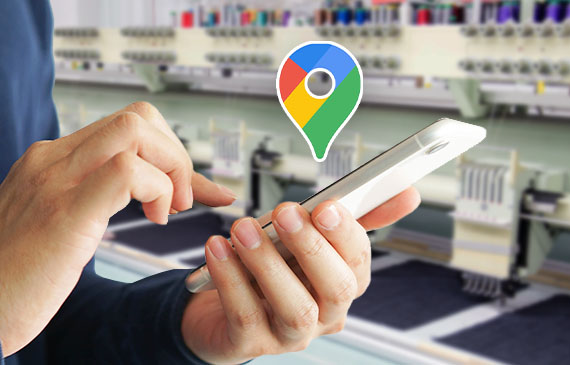You’ve worked hard building your dream decorated apparel shop. In a short amount of time, you’ve already created an exciting brand and established a customer base.
But revenue can always be better – there are plenty of opportunities to attract new customers! Building a digital marketing strategy can help if you’re willing to do a little research and careful planning.
When your business needs exponential results to grow, it pays to work smarter. Google confirms in a study with IPSOS Hong Kong research company that small businesses who use digital marketing strategies are 2.8 times more likely to see revenue growth than those who do not.
With the pandemic forcing more shoppers to buy online, digital marketing has now become essential for staking a hold in the market. Moxley, Innovation Director at M&R, stated, “Decorated apparel shops are getting new customers; including those in an age range that previously said ‘I don’t buy off the internet.’ Businesses have to take advantage of the opportunity while the window is open.”
To help you take advantage of this window, here are six ideas to build your digital marketing plan.
In this guide…
- Know Your Target Buyers
- Make Your Online Store Mobile Friendly
- Focus On Search Engine Optimization
- Build a Strong Social Media Presence
- Start an Email Newsletter
- Set a Budget for Your Marketing Plan
Know Your Target Buyers
Think about the customer who buys your products. Who are they?
The more you understand your customer – their demographics, buying behavior, what motivates their purchases – the easier it’ll be to build marketing campaigns tailored to them. Then, you’ll yield positive results more often. Make sure to stay on top of trends too! Keeping up with trends in the decorated apparel industry is a major part of helping your business stand out from the crowd

Fostering positive relationships brings positive business results. A good digital marketing strategy starts with identifying if your target customers are B2C or B2B. Marketing campaigns for both demographics will share the same best practices, but you’ll find more success when you tailor content and buying processes to their individual needs.
Offer Your Products Direct-to-Consumers (B2C)
Setting up an eCommerce website for your shop has now become essential for selling products directly to consumers. New research from Kaleido Intelligence found that eCommerce spend on physical goods will reach $6 trillion in 2022, up from $4.8 trillion in 2020. That means your business has an opportunity to take in a meaningful number of orders directly from consumers.
Your website helps digital consumers discover and purchase your products. If you don’t have a website (or a mobile-compatible site), this should be your first step before investing in digital advertising.
Consider using one of these platforms for your online store:
- Shopify: All-in-one commerce platform to start, run, and grow a business.
- Wix: A cloud-based web service that creates mobile sites with drag and drop tools.
- WooCommerce: An open-source, non-technical, eCommerce platform built on WordPress with a customizable and user-friendly interface.
- Abobe Commerce: Build multi-channel commerce experiences for B2B and B2C customers on a single platform.
- BigCommerce: Seamlessly list, optimize, advertise, sell and fulfill products across 100+ channels.
- Jimdo: Create a professional website without any coding skills.
- Etsy: Caters to an audience that values handcrafted, personalized, and unique products.
Each online store offers different pricing and features, so be sure to compare each option that best fits your needs.
Extra tip: If you want to offer better customer service, set up a live chatbot on your website to help potential customers get answers about your products.
Offer Your Products to Business-to-Business (B2B) Professionals
If you already sell to consumers, don’t forget about selling to other businesses! According to BigCommerce, more B2B customers are asking to buy products digitally.
Offer an easy sales process with a wholesale eCommerce website. Rather than selling your products individually, wholesale eCommerce creates an easy digital checkout process for businesses to purchase large quantities. If your business offers different pricing based on quantity, consider programing that into your B2B eCommerce website for easy quoting.
Find decision-makers to establish bigger long-term contracts.
If you want to increase bulk orders, look to your local community for a good chunk of the decorated apparel business. School groups, local private companies, and government agencies are always looking for decorated apparel services. The more units of decorated attire you sell for high-school football jerseys, baseball uniforms, corporate attire, the more revenue you can make.
Start reaching out to members in your local community via Facebook groups or LinkedIn. LinkedIn Sales Navigator is a digital tool that allows you to contact decision-makers and professionals across industries in an extensive 800M+ member network. To achieve the best results, aim at hyper-targeting prospects based on their geographical location, seniority levels, and company size.
Extra tip: Before sending a message to someone about your services, invest extra time to make each message unique. Mix in your personal branding highlighting your unique value proposition. Show them what you do better than any other competitor on the market. After all, the goal here is to make an outstanding first impression.
Make Your Online Store Mobile Friendly
Last year, over half of the world’s web traffic was done on a mobile phone. That means your business is missing out on major opportunities if it’s not optimized for a mobile phone.
Having a mobile responsive website means your customers can buy your products on their small device screens. For example, if your site doesn’t load fast enough, its font text is hard to read (too big or too small), or images of your products don’t fit on the screen, you can frustrate your shoppers and lose their business.
The better the mobile experience your customers have, the more likely they’ll buy from you. That’s where hiring a good web developer pays off.
Focus on Search Engine Optimization (SEO)
So, you’ve got a good-performing website on mobile. But can your customers find it?
The more visible your website is, the more likely you can sell your products.

Your business has the flexibility to ship around the globe. But what about customers close to your store? If you want to offer on-demand printing, same-day services, or even have customers drop off items they want custom embroidered or screen printed on, then being found locally can give you an advantage. That’s where local SEO comes into play.
There are a couple of easy ways to start this.
Create a Google Business Profile
Digital consumer behavior shows that if someone finds your business on Google Maps with their phone, they’re likely a potential customer.
In 2019, 88% of consumer local business searches on a mobile device either called or visited the business within 24 hours. That means if you can get a potential customer to see your online store on Google Maps, there’s a very good chance to make a sale.
Here’s an example of a Google My Business page: https://g.page/r/CUWk3fYV75sWEAE
Invest in digital ads
If you have a budget for online advertising, Google Ads has a comprehensive suite of tools to maximize to help you target customers searching for your products.
With a pay-per-click (PPC) strategy, you can convert high-quality leads by displaying ads that appear when potential customers search for your products. Your ads will display based on the parameters you set. You can target customers by the words they search for on Google, their geographic location, age, and even the device they use.
Extra tip: Be sure to compare your PPC performance against a benchmark. According to WordStream, the average click-through rate for the apparel industry was 6.46% in 2023.
Build a Strong Social Media Presence
Social media marketing (SMM) is an opportune channel to reach potential customers, helping them discover and virtually interact with your brand. According to Lauren Cover at Sprout Social, 78% of consumers are willing to buy from a company after having a positive experience with them on social.

Many screen printing and embroidery businesses begin their digital marketing campaigns by sharing their work online on social media.
You can find an affinity group for screen printing or embroidery on Facebook, Instagram, YouTube, Twitter, TikTok, and LinkedIn. Different types of content work better on different platforms, so play around with different posts to understand what your customers engage with the most.
Post Ideas
- Tell the story of how your products are made. People love a behind-the-scenes look at how things are made. Videos showing how products go from supplies to the final item are very popular.
- Show happy customers using your products. A celebratory post with someone using your product could get more organic impressions than just showcasing your new product.
- Encourage participation with customers. As posts get more engagement, they’ll raise the visibility of your brand. Use polls, CGU images, surveys, or hold a sweepstake contest to make your content more exciting.
Hashtags
Some popular hashtags to consider for your next post:
- #smallbusiness – 2.9M people are posting about this
- #shoplocal – 2.3M people are posting about this
- #screenprinting – 87K people are posting about this
- #embroiderydesign – 73K people are posting about this
- #CustomApparel – 24K people are posting about this
- #modernembroidery – 13K people are posting about this
Start an Email Newsletter
Even though a potential customer doesn’t buy today doesn’t mean they won’t convert tomorrow.
If you want to have a direct communication channel with potential buyers, start the conversation in their inbox.
Add a form on your website to collect email and contact info for users interested in learning more about the products and services you have to offer.
Set A Budget For Your Winning Digital Marketing Strategy
If all these ideas are too much, don’t sweat. There are plenty of digital marketing professionals out there who are willing to create a budget for you.
Chris Beecher, The Whole Brain Group, explains the importance of setting a budget that gets results. “If you plan to grow by 20%, but only want to invest enough in marketing to get new business cards for everyone in your company, you’re probably going to be disappointed with the results of your investment!” He suggests setting a yearly budget anywhere from 3%-5% of your top-line revenue.
Then disperse that budget consistently throughout the 12 months, as Mike Clark at Graphics Pro recommends. Over time, carefully monitor your dollars spent and check whether your budget produced more sales, new leads, and long-term customers.
If you need extra capital to allocate a marketing budget, try unlocking the equity in your equipment with a sale-leaseback.
A sale-leaseback on your embroidery or screen-printing machine is a fast and easy way to receive cash to pay for your marketing budget while making small monthly payments over an agreed period. At the end of the term, Beacon Funding releases the lien and you once again own your machine free and clear as before.
Best of all, you still retain possession of your decorated apparel machine so you can still use it for generating revenue!